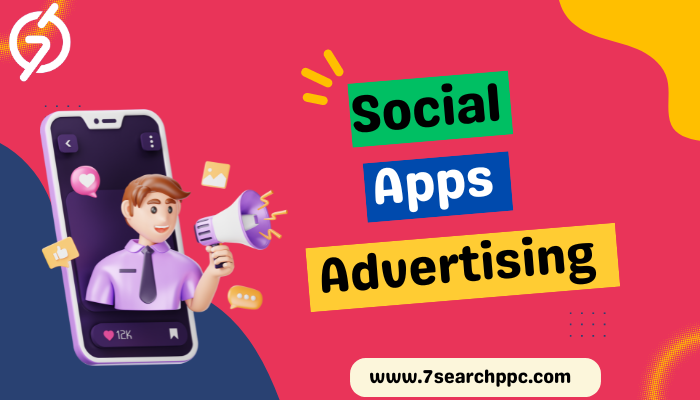Social apps advertising refers to the practice of promoting apps through paid advertisements on social media platforms like Facebook, Instagram, TikTok, Snapchat, and Twitter. These platforms allow businesses to target potential users based on various factors like demographics, interests, behaviors, and location, making it highly effective for driving app installs and user engagement.

Targeting the Right Audience: One of the key advantages of social app advertising is the ability to target a highly specific audience. Platforms like Facebook and Instagram provide detailed targeting options, such as age, gender, location, interests, and online behavior. For example, a fitness app might target users interested in healthy living or gym workouts, ensuring that the ads reach people most likely to engage with the app.
App Store Integration: Most social media platforms allow advertisers to integrate app store links directly into the ads. When users click on the ad, they are taken directly to the app’s download page in the App Store or Google Play. This seamless transition from ad to download page helps reduce friction, increasing the likelihood of users installing the app.
Tracking and Optimization: Social media platforms offer robust analytics tools that allow advertisers to track key metrics like click-through rates (CTR), installs, and user engagement. Advertisers can use this data to optimize their campaigns, adjusting targeting, ad creatives, and budgets to improve performance and ROI.
In conclusion, social app advertising leverages precise targeting, engaging ad formats, and app store integration to drive installs and boost engagement for apps, making it an essential strategy for app marketers.
How It Works:
Ad Creation and Formats: Social app advertising typically involves creating various ad formats designed to engage users. Common formats include image ads, video ads, carousel ads (multiple images or videos), and story ads (full-screen vertical content). Video ads and interactive formats are particularly effective for apps, as they allow advertisers to showcase the app’s features and benefits in a more dynamic way.Targeting the Right Audience: One of the key advantages of social app advertising is the ability to target a highly specific audience. Platforms like Facebook and Instagram provide detailed targeting options, such as age, gender, location, interests, and online behavior. For example, a fitness app might target users interested in healthy living or gym workouts, ensuring that the ads reach people most likely to engage with the app.
App Store Integration: Most social media platforms allow advertisers to integrate app store links directly into the ads. When users click on the ad, they are taken directly to the app’s download page in the App Store or Google Play. This seamless transition from ad to download page helps reduce friction, increasing the likelihood of users installing the app.
Tracking and Optimization: Social media platforms offer robust analytics tools that allow advertisers to track key metrics like click-through rates (CTR), installs, and user engagement. Advertisers can use this data to optimize their campaigns, adjusting targeting, ad creatives, and budgets to improve performance and ROI.
In conclusion, social app advertising leverages precise targeting, engaging ad formats, and app store integration to drive installs and boost engagement for apps, making it an essential strategy for app marketers.

